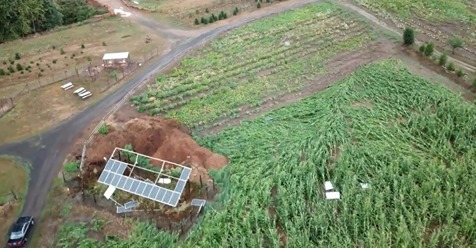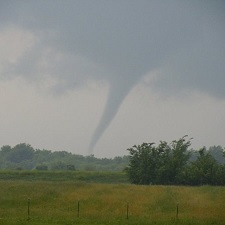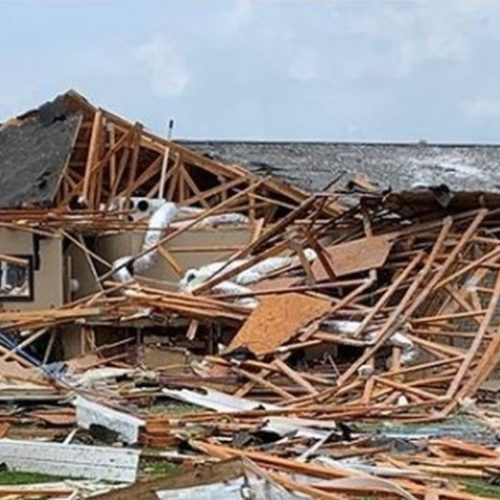National Weather Service meteorologists confirmed the funnel cloud reported near Rock Creek Sunday evening did touch down and did enough damage to be officially called a tornado.
NWS meteorologists Tyree Wilde and Treena Jensen spent part of Monday surveying the damage left behind at Plumper Pumpkin Patch and Tree Farm, after heavy thundershowers scoured the metro area Sunday evening..
They saw corn stalks twisted and laid flat, in different directions, while the next row stood straight up.
“So that’s one indicator that you had something more than straight line winds” said Wilde, who’s the Portland NWS office’s chief warning coordinator.
“If you had building damage, which we had very little, that kind of helps us determine the strength of the tornado.”
The tornado stayed on the ground about the length of two football fields, but didn’t do extensive damage to any of the buildings – even the more than 100-year-old farmhouse and barn.
So the animals inside were safe, including Dixie the sheep, a soon-to-be mom.
“We have some lambs that are coming any day ” said lead farmhand, Jennifer Delurey.
“I think it will be twins, which is normal for sheep. And we’re thinking naming them ‘Toto’ and ‘Twister.'”
Many KATU viewers say they did not get an automatic warning about it on their mobile device. Wilde says it depends on how close you were to the storm as to whether you got it or not.
“Wherever that tornado warning box is, anybody traveling in that box or near that box, your telephone is going to go off. It’s getting a signal from the nearby cell tower. So you had to be kind of close to the tornado box” said Wilde.
You can subscribe to other warning services that will alert you by phone too.
Wilde says forecasting, and the warning system, are improving.
“Our Doppler radar we put in across the country several years ago gives us phenomenal information. We get the strength of the precipitation and we can tell if the storm is rotating or not. Yesterday we saw indications that the storm was rotating. A weak rotation in it. We have meteorologists on staff 24 hours a day and when the thunderstorms started building, they started watching them closely, and put out the warning.”
While Oregon and Washington average three to four tornadoes a year, May and September are typically the most active periods — the transitional period between seasons.
And Wilde says if another warning pops up, even though Pacific Northwest tornadoes aren’t known for packing much of a punch, don’t disregard it.
“A tornado warning is one of the most serious things you can have, because it is potentially life-threatening,” he said.
by Joe English (2019, Sept 9) KATU





